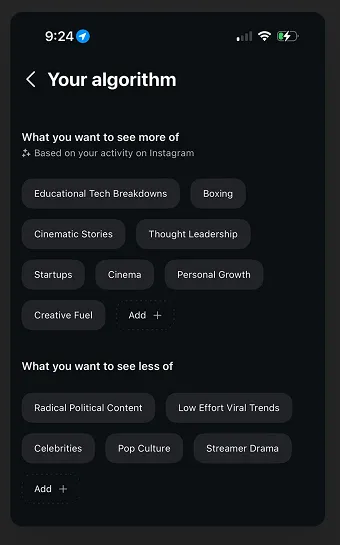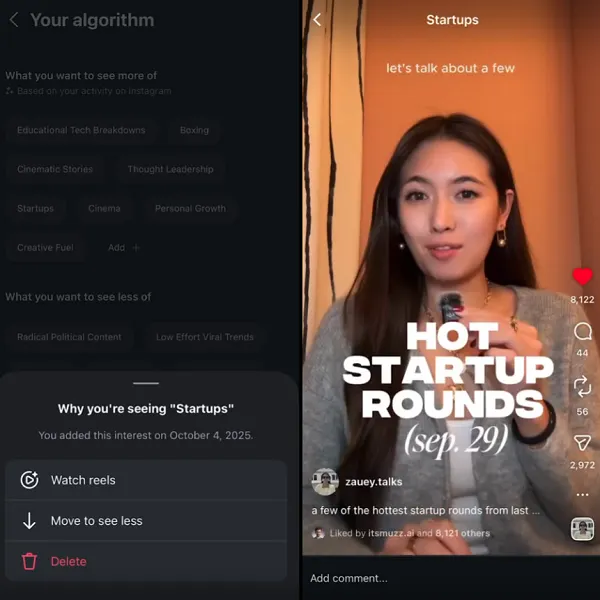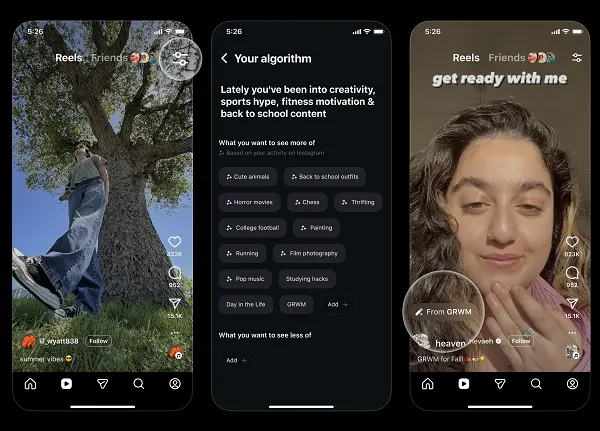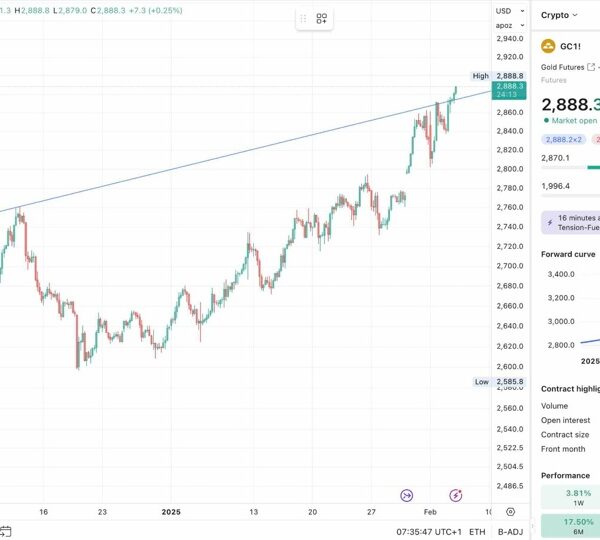Instagram’s making a new push to get people to manually guide the Reels content that they see in the app, with a new algorithm overview that will highlight the topics that it thinks you want to see, which you’ll be able to easily edit by adding or removing topic groups.
Instagram announced the new algorithm control option last month, and now, it’s being made available to some users.

As you can see in this example, shared by Roberto P. Nickson, the Reels algorithm overview will be available in a new “Your Algorithm” section within your Reels settings, which you’ll be able to access via a menu option in the Reels feed.
From here, you’ll be able to view a simplified overview of what Instagram’s system thinks that you’re interested in, by broad topic group, which you’ll be able to manually change by removing subjects, or adding others.
And even better, when you tap into any topic, you’ll have a range of options on how to manage it, while Instagram will also show you examples of the types of Reels that you’ll see in this subject group.

That’ll give you more context to go on as to whether you actually want to keep this subject in your preferences, or remove it entirely. Which could make it much easier to manage what you’re shown in the app, and overall, it’s one of the best applications of a custom algorithm control process that I’ve seen from any platform, which should address at least some user concerns around algorithmic manipulation, and how Meta’s AI-powered recommendations are ruling their experience.
The question then, however, is whether people will actually use it.
Meta has repeatedly been able to side-step concerns on this front, in terms of over-exposure, or the amplification of divisive political content, by adding in features like this, which it can point to as a control option, if users really want it.
Which is a risk for Meta, because it knows that AI-powered recommendations are driving a lot more activity in its apps.
Yet, at the same time, historically, very few people actually bother to enact these settings, and restrict their recommendations in any way.
We’ve seen this time and time again, from security changes, to data protections, to algorithm controls and feed preferences. People want these as options, so that they can feel more in control of their experience, but for the most part, they act more as a reassurance, based on their existence, not as a real control and manual input option.
For example, in the wake of the Cambridge Analytica scandal, in which Facebook user data was reportedly weaponized by political activists, which led to the height of public distrust in the company, and eventually forced Zuck and Co. to rebrand in order to avoid association with this dark period in its history.
In response to all of this noise and expanded media coverage, Facebook added a range of new data control settings and options, which gave people more options to lock down their personal info, and avoid misuse by third parties, or by Facebook (now Meta) itself.
But did people use them? Surely, amid all of the talk of the harms of Meta, and people reportedly deleting their accounts en masse, in response to this controversy, surely a lot of people locked down their info, or enacted different approaches to such.
Actually, no.
As explained by the company’s then VP of Global Marketing Carolyn Everson,
“We’ve not seen wild changes in behavior with people saying I’m not going to share any data with Facebook anymore.”
This is the same pattern we’ve seen with many similar updates. Various research reports, for example, have shown that the vast majority of social media users never update their privacy settings, while last year, a report from the Washington Post found that only a fraction of parents ever implement control options to manage their kids’ usage of social apps.
They can, if they want, and many people make a lot of noise about the risks and dangers, and the need for more manual control options, which has basically sparked the evolution of decentralized social apps, which give users more control over every element of their experience.
People want these things, in theory, but in practice, they don’t use them.
Meta knows this, which is why it’s hesitant to, say, enable users to set chronological feed options as their default. Because it knows that by simply making such options available, that’s generally enough to quell concerns, when in reality, people won’t actually use them.
And it gets more benefit from its own targeting systems being able to show people what it chooses, so Meta would clearly prefer that people leave these things alone.
But it needs to provide the option, and tools like this give the assurance of choice, whether that’s actually utilized or not.
As such, I highly doubt that many of IG’s 3 billion users are going to manually edit their algorithm preferences. But it’s an option, and you can’t complain about your experience if you have this as a choice.













